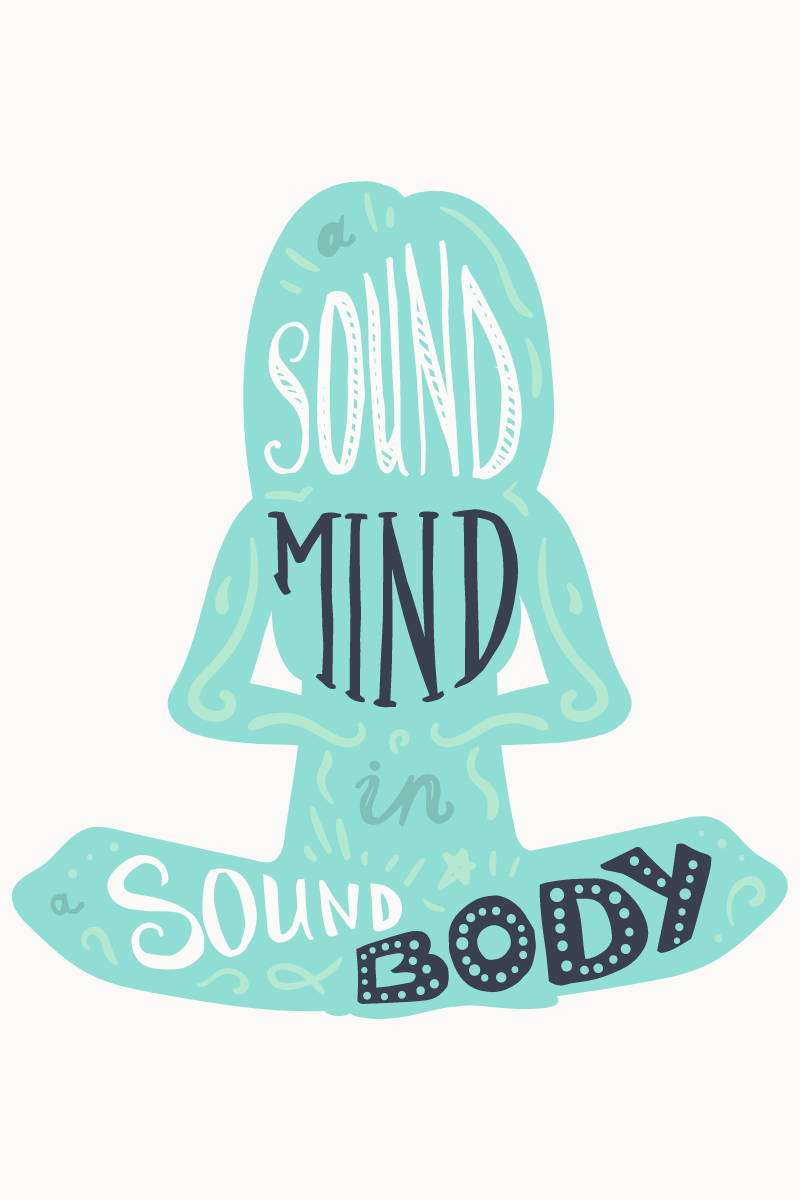How To Meditate When You Have No Idea Where To Start – Meditation For Beginners

Simply put meditation is about being present. Although many people find it intimidating, overwhelming, or ‘not for them’, it most certainly does not have to be this way. Meditation is for everyone and you don’t have to be at a certain level of experience to gain the benefits (both physical and mental health benefits) it has to offer.
It is important to note that there are many forms of meditation (almost too many to mention) and it is less about the how but more about the why when it comes to the type of meditation that you choose to practice.
Types Of Meditation Include:
- Basic-Mindfulness Meditation
- Sensory Meditation
- Movement Meditation
- Walking meditation
- Guided Meditation
- Visualization Meditation
- Transcendental Meditation
- Chanting/Mantra Meditation Program
- Body Scan (Yoga Nidra)
- Pranayama/Breathing Exercises
- Spiritual Meditation
- Loving-Kindness Meditation
- Sound Meditation
- Vipassana Meditation
Click here to learn more about the different types of meditation
With that being said a meditative state can be achieved in almost anything you do if you are doing it mindfully or with intention.
How Does It Work?
The main purpose is to find presence and this is mostly done by focusing on the breath. Meditation is ultimately a way to train the mind.
It is used as a method that encourages a heightened state of awareness and focused attention through the use of different techniques.
Since it has such phenomenal effects on the mind and the way the brain processes information it is also used for mindfulness-based therapy, cognitive behavior therapy for mental health (including substance disorders).
It works in many different ways
Click here to learn more about Meditation and the benefits of meditation
How Do You Establish A Regular Meditation Practice?
How do I make a habit out of it? Moderate evidence suggests that consistency is key and it only takes a few minutes in your daily life to set up a regular practice. Setting up a mindfulness practice is essentially creating a new habit. Therefore setting aside a specific amount of time every day (preferably at a specific, consistent time) can help to build this habit.
How To Meditate and Make Mindfulness A Habit?
Habit Stacking:
Habit stacking is an evidence-based theory that is helpful when establishing new routines or habits. Rather than creating a new habit around a time or location try creating the new habit around an existing, well-established habit.
Take one thing you do daily (like making a cup of coffee or tea in the morning) and attach another habit to that (like finding a quiet space to sit and journal). You then form a new routine of making a cup of coffee and sitting down to journal (meditation) before you start your day.
The Basics: How Does Meditation Look Like?
The practice of meditation does not have a certain look. Often it is connotated to spiritual practices but there are so many different forms of meditation.
You don’t have to sit with your legs crossed for hours on end. It looks and feels different for everyone. You can meditate while in a conversation, while driving or while doing anything really! When you are doing something with intention and awareness of your breath you are meditating!
How to Meditate: A Step-By-Step Guide
How to meditate when you have no idea where to start – How do I actually start meditating?
Meditation is something everyone can do, here’s how to do meditation step-by-step:
1. Decide Which Form Of Meditation You Want To Practice
There are many many different ways to meditate – and by experimenting you will find one that works for you. Neither one is more superior to the other so it does not matter which form of meditation you choose as long as it works for you.
Use this guide to learn which one might personally benefit you
2. Find A Quiet Place
The first step towards meditation is finding a comfortable spot. Make this your ‘meditation spot’ that is completely dedicated to the act of meditating. Having a sacred space makes the experience all the more special and something to look forward to. Maybe decorate it with candles, incense, cushions, play music – do whatever you feel supports your practice.
However, it is important to note that meditation can be done anywhere and does not need a specific place (you can meditate in your car!). If you’ve chosen to do a walking meditation immerse yourself in nature – evidence suggests that nature immediately brings you to a present state. However, having a dedicated space helps with establishing a habit. It acts as a constant reminder.
3. Decide On How Long You Want To Meditate For
The second thing to consider is how long to meditate for. This depends on how much time you have and what you can realistically commit to.
For beginners, it is recommended to start with 1- 5 minutes every day and build it from there. As little as taking a few deep breathes into your belly is all it takes.
Remember this is a brain exercise and you cannot expect yourself to jump into a 60-minute meditation from the get-go (you wouldn’t run a marathon if you’ve never practiced running before right?).
Setting an alarm clock is helpful not only to keep your mind off of the clock but to also help you not fall asleep (unless your entire purpose is to fall asleep).
4. Pick A Consistent Time To Meditate Daily
Creating a habit is all about routine – therefore pick a daily time that you can commit to. It can be whenever during the day (as you wake up, go to bed, or even during lunchtime). Be specific with your time and try to stick to that. Being disciplined with the time allows us to integrate meditation into our everyday lives as it becomes part of our daily routine and we can then start to access that awareness in any situation.
5. Set Your Intention
Decide the purpose of your mediation (this can be different every day) meditating with an idea, theme, or concept in mind drives the meditation forward. This will also determine which type of meditation you practice.
Meditation for sleep? Dim the lights, play music, and lie on your bed.
Meditation for gratitude? Sit in a comfortable seat and focus on all the things you are grateful for – you can even write them down as part of a gratitude journal.
Meditation for anxiety? Sit comfortably and focus on your breath by implementing different breathing exercises.
Want to tap into your creativity? Maybe play some music and interpret it through dance or get a pencil and sketchpad out.
Wanting to relax your physical body? Maybe playing a guided Yoga Nidra meditation is needed.
Setting an intention is the basis of mindfulness practice as it does exactly that – it makes you more mindful and focuses your mind on something specific which limits distractions.
6. Focus Your Mind On Your Breath
It does not matter what type of meditation you choose – try to focus all your attention towards this time you have set out for yourself. Keep it simple – there is no need to complicate it.
Here’s one basic mindfulness meditation practice that will help get you started.
How to practice breath meditation?
Sit comfortably upright in a chair or cross-legged on the floor. Close your eyes and breathe deeply through your nose. As you breathe in, imagine that each inhalation fills you—from head to toe, soul body.
Imagine that every part of you feels full and satisfied. Then as you exhale imagine all this energy flowing out of you, emptying your lungs, let all your worries and thoughts that don’t serve you simply pour out of your mind.
Disengage from your thoughts by noticing the way your breath moves in and out of the body.
Notice how the breath feels in your body – notice the physical sensations, the bodily sensations, and how your mind is reacting to this. For eg. anxiety can show up as sweaty palms or a shallow breath. Just notice it, without any judgment, you don’t have to create an explanation for it. There is no ‘right’ or ‘wrong’ experience everything is simply just as it is.
7. Be Patient And Kind To Yourself
It is completely normal for the mind to wander – the brain is wired to do so. “What should I make for dinner? I hope my boss approves the new project? How long do I still have to sit here for?”
How Do I Quiet My Thoughts And Keep My Mind From Wandering?
When you find your mind is jumping from one thought to the next, just bring your focus and attention back to your breath. Be gentle with yourself – the point is not to beat yourself up about not being able to still the mind.
In fact, achieving a thoughtless mind is not the goal of meditation at all. It is simply just to redirect your focus and see your thoughts from an outside perspective rather than getting involved.
You become the onlooker of your thoughts, not the experiencer. Think of your thoughts as clouds that are simply just being blown by a gentle breeze as they pass through your mind.
Secondly, implementing any sort of habit takes discipline and will. Mediation is also an investment into creating time and space for yourself – so try to be strict with this when you start.
However, if you miss a day or skip a day or find yourself only committing to one day a week this is fine – you are doing your best. Gently bring yourself back to a mindfulness routine by committing where you can. A successful mediation should leave you feeling at ease not add to the stress of not being able to commit to something.
We “practice” mindfulness so we can learn how to recognize when our minds are doing their everyday acrobatics, and maybe take a pause from that for just a little while so we can choose what we’d like to focus on. In a nutshell, meditation helps us have a much healthier relationship with ourselves (and, by extension, with others). (mindful.org)

Frequently Asked Questions:
How Much Should I Meditate?
This depends on how much time you can realistically commit to. There is no black and white answer. A better question would be: How long would I like to meditate for? Try to make meditation a habit by implementing it in your daily life by using short, intentional meditations.
What If I Don’t Have Time?
There is always time, it doesn’t matter how busy you are. It is just about shifting priorities by committing to the mindfulness practice. Sometimes it only takes a few minutes to do a quick check-in, while other times we can be here for a long period of time. It is recommended to meditate every day so that you can build resilience, and lower stress.
How Long Do You Have To Meditate To See Results?
Any length of time is better than no time spent meditating. No evidence states an optimal amount of time. It only takes a few deep mindful breaths to feel regulated and calm – this is why meditation can be done anywhere at any time. If you are being intentional you are meditating. This simple exercise will allow you to experience the positive effects of meditation.
What Is Challenging About Meditation?
The practice of mindfulness can feel overwhelming. The most challenging part that people find when meditating is to sit still and simply just be. Many people find tapping into their thoughts intimidating and find it difficult to concentrate without “doing”. Remember, you don’t necessarily have to sit in silent stillness to experience a mindful meditation. The misconception of doing it wrong can also be a challenge.
But, you can’t fail at meditation. If you can breathe you can meditate. Meditation has been around for thousands of years. It’s one of those things we do without thinking about why we’re doing it.
We just know that when we sit down on our cushion, we feel better afterward.
Most people who try meditation know they’ll get some kind of benefit from it, even when it doesn’t feel like it at the moment – calming the mind can also feel very frustrating.
They expect to experience something profound after sitting quietly for 10 minutes. That doesn’t happen very often. One has to be patient. Mindfulness practice is a journey and a process – it is after all not called mindfulness perfect.
How Do Meditation Apps Work?
Meditation apps usually have a collection of guided meditations or mindfulness meditation programs, with different intentions that are simple to integrate into our everyday lives. You can filter out what you want by choosing the length, style, and type of meditation.
There are many different meditation sessions to choose from like; mindfulness meditation programs, spiritual mindful meditation practices, mantra meditation programs, loving-kindness meditation, traditional Buddhist meditation; to name a few.
The effects of meditation programs available are profound. It is a great way to start when you are new to the practice of mindfulness. It is also a fantastic tool when you want to change a certain behavior or a tool to work through mental disorders such as anxiety, depression, eating disorders, substance use disorders, social anxiety disorder, or PTSD.
How To Meditate On Planes, Trains, And Automobiles
That’s right meditation can be done anywhere, and what better opportunity to take a few moments for yourself when you are commuting.
Try this: Close your eyes – tap into your breathing and notice how it slows down – become aware of your thoughts without involving yourself with them – maybe expand this awareness to your external environment – what can you hear, smell, taste, see (even if it is nothing), touch – what physical sensations and feelings are coming up – now let that all go and open your eyes. How do you feel different than a few moments ago?
How Do I Know I’m Doing It Right?
There is no ‘right or wrong way to meditate. Don’t think it has to be a “successful meditation”. The idea is not to force your mind to think or feel anything specific while you meditate. If you can concentrate on your breath you are meditating.
How Do I Know If Meditation Is Working?
Take note of your breath has it deepened? Does it flow easier? Does your mind feel clearer? If so great! If not that’s totally fine too. The exact thing about a mindfulness practice is that we are not here to figure anything out. We don’t have to know if it is working (if you are asking yourself these questions it most definitely is).
Questioning the practice is the first step to questioning ourselves because through questions we learn – and that’s exactly the aim!
We simply trust the process and trust that it is benefiting us exactly in the way that we need it. Ultimately it holds up a mirror to your mind as it brings up thoughts and feelings that we have to work through and learn from and often this is uncomfortable to confront.
It might not always feel like it’s working – in fact most often it might bring up feelings of frustration but subconsciously it is making a difference. Through this frustration, it is teaching you something too.



